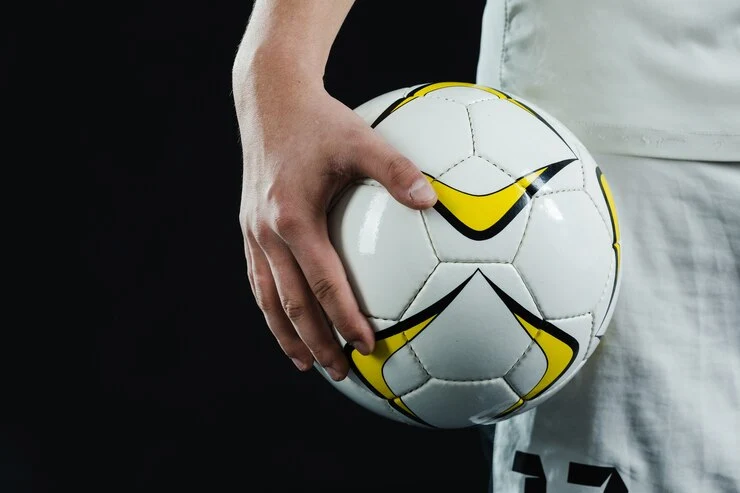Ever kicked a soccer ball that felt like a rock wrapped in duct tape? Yeah, we’ve all been there. The wrong soccer ball can ruin a game, wreck your toe, and make you question your life choices. But here’s the good news: finding the best soccer ball isn’t rocket science. It just takes knowing what to look for and avoiding the junk that only looks like a soccer ball but behaves like a beach ball in a windstorm.
So, what are the best soccer balls?
The best soccer balls are ones that match your playing style, last longer than your last New Year’s resolution, and feel just right when you pass, shoot, or juggle. Some are built for matches, others for training. And yes, there are different balls for kids, futsal, or pretending you’re Messi in your backyard.
Let’s break it all down so you never waste money (or your toes) again.
Types of Soccer Balls and Why It Matters
Let’s clear something up. Not all soccer balls are created equal. You wouldn’t wear flip-flops to a snowball fight, right? Same logic here.
Match Balls
These are the top-tier balls used in official games. If a ball is FIFA Quality Pro certified, you know it’s the real deal. These balls are designed with premium materials, excellent flight control, and a consistent bounce. They’re tested in labs, not just kicked around in someone’s garage.
But here’s the catch: they’re pricey. If you’re not playing in tournaments, you probably don’t need one unless you’re a soccer nerd and want the luxury feel anyway.
Training Balls
These are like the gym rats of soccer balls. They’re made to take a beating day after day, drill after drill. They’re heavier, more durable, and way cheaper than match balls.
They may not feel as smooth as match balls, but they last forever. If you’re practicing every day, this is your ball. It won’t fall apart after 50 toe touches.
Recreational Balls
Planning a weekend kick-around with friends? These are your go-to. They’re affordable, colorful, and good enough for casual play. But don’t expect miracles in terms of accuracy or touch.
Great for kids, backyard games, and forgetting you’re an adult with bills for 90 minutes.
Futsal Balls
Played indoors? You’ll want a futsal ball. It’s smaller, heavier, and has less bounce so it doesn’t randomly fly into the ceiling or someone’s popcorn bowl during indoor games.
They’re perfect for tight control and quick passes. Think more chess, less chaos.
Youth Balls
Kids shouldn’t be kicking around full-size adult balls. It’s not fun, and it’s definitely not safe. Youth soccer balls come in smaller sizes (usually size 3 or 4) and are lighter. Easier to control, easier on their little legs, and way more fun to play with.
Read Also: Messi vs Ronaldo Who Has the Edge in Their Final Years
What Makes a Soccer Ball Actually “The Best”?
Let’s be honest brands love slapping the word best on everything. But just because it says “premium” on the box doesn’t mean it’s not just an overpriced rubber melon.
So what actually makes a soccer ball worth your money?
Material
Most good soccer balls use PU leather. It’s soft, feels nice when you kick it, and lasts a long time. Cheaper balls might use PVC, which is harder and feels like you’re kicking a bowling ball.
Oh, and rubber? That’s fine for your dog’s toy, not your next match.
Bladder Type
Nope, not your bladder. We’re talking about the thing inside the ball that holds the air.
-
Latex bladders = better feel, softer touch.
-
Butyl bladders = keeps air longer, more durable.
Choose latex for performance. Choose butyl for less pumping and more playing.
Stitching & Construction
Hand-stitched balls are generally higher quality. Machine-stitched ones are more consistent but may not last as long. If you want the best of both worlds, look for thermally bonded balls. They’re heat-glued together, so there’s no stitching to break.
Fancy, huh?
Size & Weight
Soccer balls come in different sizes:
-
Size 5: Standard for ages 13+
-
Size 4: For ages 8–12
-
Size 3: For ages 7 and under
If you’re 30 and still kicking around a size 3, we need to talk.
Certifications
If you see “FIFA Quality” or “FIFA Quality Pro” on the ball, you’re dealing with the upper crust. These balls have passed tests for shape, weight, bounce, water absorption, and how true they fly in the air.
Top 5 Best Soccer Balls You Can Buy Right Now
Let’s get to the fun part actual ball recommendations. These aren’t sponsored. No one’s sending us free balls (yet). These are just solid options loved by players, coaches, and that one guy who never misses penalty kicks.
1. Adidas Tango Glider
-
Why it’s great: Classic design, solid for both training and games.
-
Best for: Recreational players and stylish passers.
-
Price: Affordable, even your wallet will cheer.
2. Nike Flight Ball
-
Why it’s great: Used in Premier League matches. Super accurate flight.
-
Best for: Match play, serious ballers.
-
Price: Not cheap. Hide your credit card.
3. Select Numero 10
-
Why it’s great: Known for durability and performance.
-
Best for: Training, semi-pro matches.
-
Price: Mid-range, but worth every penny.
4. PUMA Orbita La Liga Ball
-
Why it’s great: Great grip and visibility. Used in Spanish league games.
-
Best for: Fans of La Liga, and anyone who loves a flashy ball.
-
Price: Mid to high.
5. Wilson Traditional Soccer Ball
-
Why it’s great: Budget-friendly, old-school vibes.
-
Best for: Backyard games, kids, casual fun.
-
Price: Cheap and cheerful.
How to Choose the Best Soccer Ball for YOU
Okay, so now you know what’s out there. But how do you actually pick your perfect soccer ball? Don’t worry, I got you.
For Beginners
Stick to a solid training or recreational ball. Don’t blow money on a FIFA-certified match ball if you’re just learning how to juggle.
For Advanced Players
Go for something that matches game-day conditions. A match-quality ball helps you prep like a pro. Just make sure you treat it with love. No punting it at brick walls.
For Kids
Lightweight. Size 3 or 4. Soft material. If the ball looks cooler than their video game, you’ve won.
For Training
You’ll want durability and good air retention. Training balls take a beating, so pick one that can handle endless drills and coach’s yelling.
How to Keep Your Soccer Ball Alive and Kicking
A good ball is an investment. If you take care of it, it’ll stick with you through wins, losses, and questionable slide tackles.
Cleaning
Wipe off dirt with a damp cloth. Avoid dish soap unless your ball’s auditioning for a cooking show.
Inflation
Use a proper pump. Stick to the recommended PSI (usually printed on the ball). Overinflating makes it bounce like a kangaroo; underinflating makes it feel like a wet sponge.
Storage
Don’t leave it in your trunk. Heat messes with the shape. Keep it in a cool, dry place. A ball bag works best, or just… not the garage in July.
Conclusion
There you go. That’s everything you need to know to find the best soccer ball. From casual kick-arounds to serious match balls, it all depends on your needs, skill level, and how much you’re willing to spend.
But no matter what ball you choose, remember this: it’s just a ball until you put it in motion. Then, it becomes magic.
Now get out there and play like your Wi-Fi just went out and this is your only option.
Frequently Asked Questions
1. What size soccer ball should I buy?
Use size 5 for ages 13+, size 4 for ages 8–12, and size 3 for kids under 8. Picking the right size makes a huge difference in control and safety.
2. What’s the best ball for beginners?
Go for a training or recreational ball made from PU or PVC, like the Adidas Tango Glider. It’s durable and budget-friendly.
3. Are expensive soccer balls really better?
Yes, if you’re playing competitively. They offer better control and feel. For casual games, cheaper options work just fine.
4. What’s the difference between a match ball and a training ball?
Match balls are made for performance, while training balls are tougher and built to last through drills and rough play.
5. How should I care for my soccer ball?
Wipe it clean with a damp cloth and store it in a cool, dry place. Avoid leaving it in the sun or over-inflating it.






